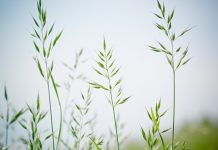
Knowledge is power. In the same way a mechanic knows which options to turn down at the dealership, a little know-how can go a long way in easing anxieties and even saving money. Likewise, some expensive routine practices on farms may not be entirely necessary. Integrated Pest Management is one of many ways farmers can save money and enhance their conservation practices with a little ingenuity.
Traditional pest control involves routine application of pesticides, but they may not always be needed. Unnecessary applications mean dollars down the drain and avoidable harm to beneficial insects that pollinate or protect crops. With IPM, pesticides are only used as needed. It’s a commonsense alternative that keeps crops safe from harm while conserving pollinators.
It’s no secret: farm production costs are on the rise. According to the USDA’s Economic Research Service, input costs have risen 25% and 26% for soybeans and corn, respectively, since 2020. After fertilizers and interest expenses, the cost of pesticides has inflated more than any other input with a 66% rise in just three years.
At the same time, pollinators are in trouble. In 2016, German researchers found their insect biomass decreased by over 75% since 1989. This is deeply concerning because we depend heavily on pollinators in conservation and agriculture. Most flowering plants and about 35% of all food we eat are a result of animal pollination.
IPM provides a solution to both problems. It allows the farmer to control the expense of pesticides and keeps the unintended side effects low. Here are a few steps to getting started with IPM:
1. Learn your key pests. There are often a handful of specific pests to look out for with each crop, as well as beneficial insects producers should know. For example, soybean aphids are a concern for soybean growers, but minute pirate bugs are natural soybean aphid predators and can help control the aphid population naturally. It’s also important to know about the life cycles and various forms your pests can take. The more a producer knows about pests and what attracts them, the more can be done to prevent them.
2. Set action thresholds. Some pests are inevitable. Depending on the crop and its associated pests, farmers can have different tolerances for their presence. Soybeans can take quite a bit of defoliation before yield is reduced, which rarely occurs in Ohio. For example, with soybean aphids, extension offices suggest taking action to control the population if you notice more than 250 aphids per plant. This is the action threshold. For most major pests, university extensions have set recommendations for action thresholds. Generally, the action threshold for farmers should be when the cost of damage is greater than the cost of control. Knowing your action thresholds ahead of time will make scouting easier.
3. Monitor/scout. Scouting is key in IPM. It allows a grower to monitor pests and take steps to curb them before it becomes a major infestation. Once or twice a week, closely examine a sample of plants. Walking in a “W” pattern across the field can help give a representative sample. Some pests like thrips and aphids can be hard to see with the naked eye, in which case a hand lens/loupe is recommended. Other implements in a scouting toolset might include a sweep net, traps and notebook.
4. Evaluate results. Ask questions and record results for every season and crop. Should you have pulled the trigger on treating your corn sooner? Is there anything you can do to prevent the pest from appearing next time? Make sure you keep detailed data so you can make changes to improve your pest management and reduce costs.
IPM is not an all-or-nothing approach. You can experiment and see what aspects work best for you. Any steps you take to reduce costs and keep pollinators healthy will benefit you and the ecosystem alike. Maybe a farmer can keep their traditional spraying methods for their corn fields and use IPM on one soybean field as an experiment. You know what works best for your farm, your crops and your budget. Doing what you can to prevent excess pesticide use can keep your crops and soil healthier in the long run while saving you money.
Extension agents, NRCS staff and SWCD staff can be a great resource in assisting you with IPM questions. Take some steps to save your wallet and good bugs by integrating IPM practices into your fields next season.












